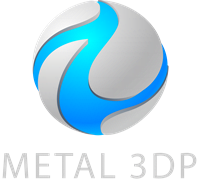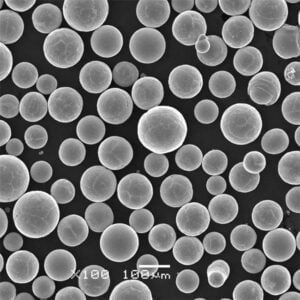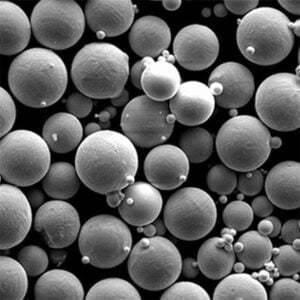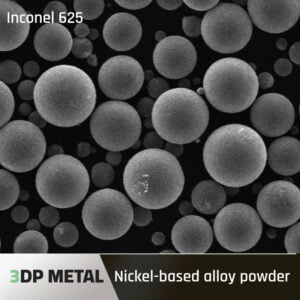Overview of 3D Printing Metal Materials
3D-printen, ook wel bekend als additieve productie, maakt de creatie van complexe metalen onderdelen rechtstreeks uit 3D CAD-gegevens mogelijk. In tegenstelling tot traditionele subtractieve methoden zoals CNC-bewerkingen, bouwt 3D-printen onderdelen laag voor laag op zonder de noodzaak van speciaal gereedschap of armaturen.
Metaal 3D-printen opent nieuwe mogelijkheden voor het produceren van op maat gemaakte, lichtgewicht en hoogwaardige metalen componenten met complexe geometrieën. De luchtvaart-, automobiel-, medische en defensie-industrie maakt steeds meer gebruik van 3D-printen met metaal voor productietoepassingen voor eindgebruik.
Niet alle metalen kunnen echter eenvoudig in 3D worden geprint. De meest gebruikte metalen materialen zijn aluminium, titanium, nikkel, roestvrij staal en kobalt-chroomlegeringen. De materiaalkeuze hangt af van de specifieke toepassingsvereisten – sterkte, corrosieweerstand, prestaties bij hoge temperaturen, biocompatibiliteit, enz.
Deze uitgebreide gids biedt een gedetailleerd overzicht van verschillende metalen en legeringen die worden gebruikt bij 3D-printen. We bespreken de samenstelling, eigenschappen, toepassingen en voor- en nadelen van populaire metalen materialen om u te helpen het juiste materiaal voor uw behoeften te selecteren.
Belangrijkste inzichten over metalen 3D-printmaterialen:
- Aluminiumlegeringen bieden een goede sterkte-gewichtsverhouding en corrosieweerstand tegen lagere kosten.
- Titaniumlegeringen bieden uitstekende sterkte met een lage dichtheid en biocompatibiliteit voor medisch gebruik.
- Roestvast staal heeft een hoge sterkte en corrosieweerstand voor gereedschappen en functionele onderdelen.
- Nikkel-superlegeringen zijn bestand tegen hoge temperaturen, waardoor ze geschikt zijn voor de lucht- en ruimtevaart.
- Kobalt-chroomlegeringen zorgen voor hardheid, slijtvastheid en biocompatibiliteit voor tandheelkundige en medische implantaten.
- De materiaalkeuze hangt af van de mechanische vereisten, de nabewerkingsbehoeften, de kosten en de geschiktheid van de 3D-printmethode.
- De onderdeeloriëntatie, ondersteuningsstructuren, laagdikte en bouwparameters moeten voor elk metaalmateriaal worden geoptimaliseerd.
- Nabewerking zoals heet isostatisch persen kan de eigenschappen van het uiteindelijke onderdeel verbeteren.
Samenstelling van metalen materialen voor 3D-printen
| Metaal Categorie | Gemeenschappelijke legeringen | Samenstelling | Eigenschappen | Toepassingen |
|---|---|---|---|---|
| Steel | 17-4 PH Stainless Steel, 316L Stainless Steel, AISI 4130 Steel | Primarily iron (Fe) with varying amounts of chromium (Cr), nickel (Ni), molybdenum (Mo), carbon (C), and manganese (Mn). | Excellent strength, corrosion resistance, and versatility. Can be heat treated for specific properties. | Aerospace components, medical implants, automotive parts, tools and dies |
| Aluminium | AlSi10Mg, AlSi7Mg0.3, Scalmalloy | Primarily aluminum (Al) with additions of silicon (Si), magnesium (Mg), and sometimes copper (Cu) or scandium (Sc). | Lightweight, good strength-to-weight ratio, and high thermal conductivity. Can be post-processed for added strength. | Aircraft parts, heat sinks, automotive components, prosthetics and orthotics |
| Titanium | Ti-6Al-4V, CP Titanium | Primarily titanium (Ti) with aluminum (Al) and vanadium (V) as main alloying elements. | High strength-to-weight ratio, excellent corrosion resistance, and biocompatibility. | Aerospace components, medical implants, sporting goods, chemical processing equipment |
| Nikkel-superlegeringen | Inconel 625, Inconel 718 | Primarily nickel (Ni) with additions of chromium (Cr), iron (Fe), cobalt (Co), molybdenum (Mo), and niobium (Nb). | Uitzonderlijk sterk bij hoge temperaturen, bestand tegen oxidatie en kruipweerstand. | Gas turbine engine components, heat exchangers, rocket engine parts |
| Kobalt-Chroom | CoCrMo, Haynes 214 | Primarily cobalt (Co) and chromium (Cr) with molybdenum (Mo) and other elements for specific properties. | High strength, wear resistance, biocompatibility, and good corrosion resistance. | Medical implants, dental prosthetics, cutting tools, wear-resistant components |
| Vuurvaste metalen | Tungsten (W), Tantalum (Ta) | Pure metals with very high melting points. | Exceptional high-temperature strength and heat resistance. Not widely used due to high cost and difficulty in processing. | Furnace components, crucibles, rocket engine nozzles, heat shields |
| Edelmetalen | Gold (Au), Silver (Ag) | Pure metals or alloys with other precious metals. | High electrical conductivity, reflectivity, and biocompatibility (for specific alloys). Limited use due to high cost. | Electrical connectors, medical devices (limited applications), decorative components |
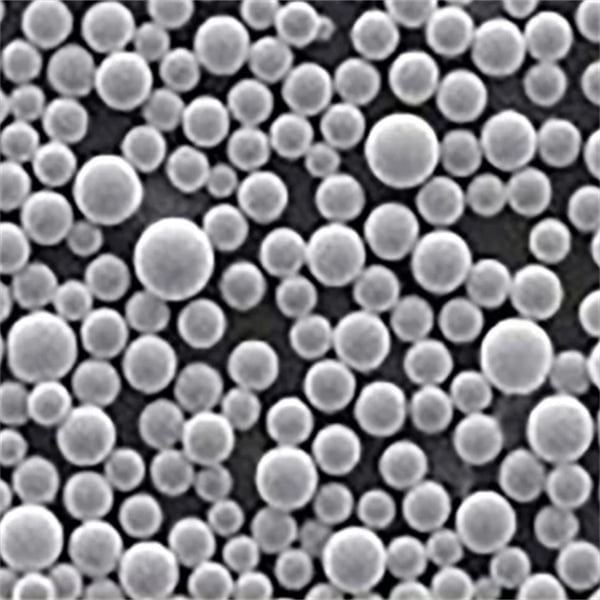
Mechanische eigenschappen van metalen materialen
| Eigendom | Beschrijving | Eenheden | Importance in Engineering Applications | Examples of Materials with High Values |
|---|---|---|---|---|
| Kracht | The ability of a metal to resist deformation or fracture under an applied load. There are different types of strength, such as tensile strength (resistance to pulling forces), compressive strength (resistance to pushing forces), and shear strength (resistance to forces that tend to cause the material to slide). | MPa (Megapascals), ksi (thousand pounds per square inch) | Strength is a fundamental consideration for any load-bearing component. The specific type of strength required depends on the anticipated loading conditions. | • High-strength steel: Used in bridges, buildings, and vehicles due to its excellent tensile strength. |
| Stijfheid | A measure of a metal’s resistance to elastic deformation under load. Stiff materials exhibit minimal deflection under stress. Stiffness is quantified by Young’s Modulus, which relates stress (applied force) to strain (resulting deformation). | GPa (Gigapascals), psi (pounds per square inch) | Stiffness is crucial for applications requiring dimensional stability, such as machine tool frames and precision instruments. | • Aluminum: Offers a good balance between stiffness and weight, making it ideal for aircraft construction. |
| Elasticity | The ability of a metal to deform under load and then return to its original shape once the load is removed. Elastic behavior is desirable in many applications, as it ensures components can recover from temporary stresses without permanent damage. | – | Elasticity is essential for components that experience repeated loading and unloading, such as springs and shock absorbers. | • Spring steel: Possesses excellent elastic properties, allowing it to store and release energy efficiently. |
| Plasticity | The ability of a metal to undergo permanent deformation under load without fracture. Plastic deformation is useful for shaping metals into desired forms through processes like forging or extrusion. | % elongation | Plasticity is advantageous for manufacturing applications where metals need to be bent, drawn, or pressed into specific shapes. | • Copper: Highly ductile and malleable, making it suitable for electrical wiring and plumbing due to its ease of shaping. |
| Ductiliteit | The ability of a metal to be drawn into thin wires without breaking. Ductility is a measure of a metal’s capacity for plastic deformation in tension. | % elongation | Ductile metals are valuable for applications requiring wires, cables, or other elongated forms. | • Gold: Exceptionally ductile, allowing it to be hammered into thin sheets for jewelry and decorative purposes. |
| Malleability | The ability of a metal to be flattened into thin sheets without breaking. Malleability reflects a metal’s capacity for plastic deformation in compression. | % reduction in area | Malleable metals are well-suited for applications requiring flat sheets or panels. | • Aluminum: Highly malleable, making it a popular choice for food packaging and building materials. |
| Taaiheid | The ability of a metal to absorb energy before fracturing. Tough materials can withstand significant impact or force without breaking. | J/m (Joules per meter) | Toughness is critical for components subjected to impact or dynamic loading, such as hammers and vehicle parts. | • Steel alloys: Can be formulated to achieve high toughness for applications demanding strength and impact resistance. |
| Resilience | The ability of a metal to absorb energy elastically and then release it upon unloading. Resilient materials can recover stored elastic energy after deformation. | J/m (Joules per meter) | Resilience is beneficial for components that experience repeated bending or flexing, such as springs and beams. | • High-carbon steel: Exhibits good resilience due to its balanced combination of strength and elasticity. |
| Creep | The tendency of a metal to deform plastically under a constant load over time, particularly at elevated temperatures. Creep is a concern for applications involving long-term exposure to high stresses and temperatures. | % strain per unit time | Creep resistance is crucial for components operating under sustained loads at high temperatures, such as turbine blades and boiler tubes. | • Nickel-based superalloys: Engineered to resist creep at extreme temperatures, making them ideal for jet engine components. |
| Hardheid | The resistance of a metal to localized plastic deformation from an indentation or scratching force. Hardness is often correlated with wear resistance. | Brinell hardness (HB), Vickers hardness (HV) | Hardness is essential for components that experience wear and tear, such as cutting tools and bearings. | • Tungsten carbide: Exceptionally hard, making it a valuable material for drill bits and wear plates. |
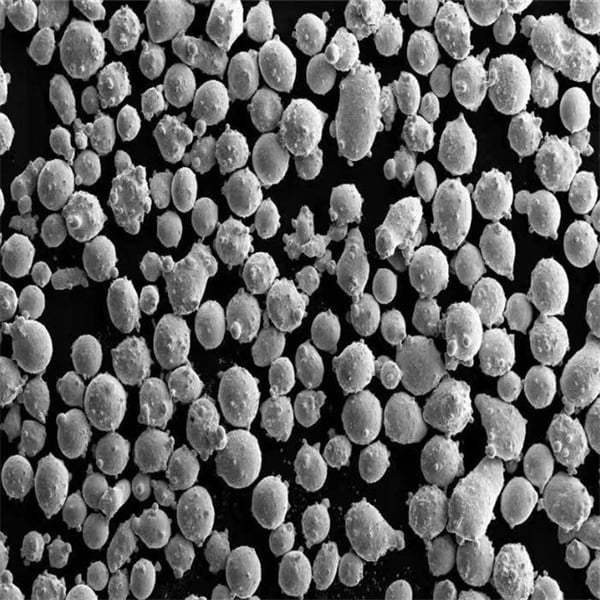
Toepassingen van 3D-printen met metaal
| Sollicitatie | Beschrijving | Voordelen | Industrie |
|---|---|---|---|
| Functional Prototypes | Metal 3D printing allows engineers to create fully functional prototypes of parts much faster and more cost-effectively than traditional methods like CNC machining. These prototypes can be rigorously tested to validate design concepts before committing to mass production. | * Reduced Time to Market: Parts can be iterated on quickly, accelerating the development process. * Increased Design Freedom: Complex geometries and internal features can be easily incorporated. * Material Accuracy: Prototypes can be made from the same metal intended for final production. | * Aerospace: Engine components, air ducts, landing gear parts. * Automotive: Engine blocks, transmission components, lightweight body panels. * Medical Devices: Surgical instruments, prosthetics, custom implants. |
| Low-Volume & Specialty Parts | Metal 3D printing excels at producing small batches or one-off parts that would be expensive or impractical to manufacture with traditional techniques. This opens doors for customization, on-demand manufacturing, and niche applications. | * Reduced Minimum Order Quantities: Eliminates the need for expensive tooling setups typically required for low-volume production. * Design for Customization: Parts can be easily personalized for specific needs or applications. * Complexities Made Simple: intr intricate geometries and internal features can be readily produced. | * Motorsports: Custom gears, brackets, and lightweight components. * Oil & Gas: Replacement parts for downhole equipment, bespoke valves and fittings. * Defense: Weaponry components, customized armor plating, specialty tools. |
| Surgical & Dental Implants | Metal 3D printing is transforming medical care by enabling the creation of personalized implants with complex lattice structures that promote bone ingrowth and osseointegration. This leads to improved patient outcomes and faster recovery times. | * Personalized Implants: Custom-designed implants that perfectly match a patient’s anatomy can be created. * Improved Biocompatibility: Porous structures created through 3D printing encourage bone growth and tissue attachment. * Reduced Risk of Rejection: 3D printing allows for the use of biocompatible materials like titanium and tantalum. | * Orthopedics: Hip and knee replacements, custom spinal implants, trauma repair plates. * Dentistry: Dental crowns and bridges, complex jaw implants, customized surgical guides. |
| Complex Brackets & Heat Exchangers | Metal 3D printing allows for the creation of intricate brackets and heat exchangers with internal channels and lightweight lattice structures that would be impossible or prohibitively expensive to manufacture using traditional methods. | * Design Optimization: Lightweight and strong brackets can be designed to minimize weight and improve performance. * Enhanced Heat Transfer: Complex internal channels can be incorporated into heat exchangers for superior thermal management. * Freedom of Design: 3D printing allows for the creation of geometries that push the boundaries of conventional manufacturing. | * Aerospace: Lightweight brackets for aircraft structures, complex heat exchangers for engine cooling. * Automotive: High-performance heat exchangers for racing engines, intricate brackets for suspension systems. * Consumer Electronics: Thermal management solutions for laptops, heat sinks for high-power electronics. |
| End-of-Arm Tooling (EOAT) | Metal 3D printing enables the creation of customized EOAT for robots that perfectly match the specific requirements of a task. This leads to increased efficiency, flexibility, and improved production processes. | * Conformal Grippers: Grippers can be 3D printed to precisely match the shape of the object being handled. * Lightweight Design: Metal 3D printing allows for the creation of lightweight grippers that improve robot speed and dexterity. * Reduced Lead Times: Custom EOAT can be designed and printed quickly, minimizing downtime during production setup. | * Automotive Manufacturing: Grippers for handling car parts during assembly. * Electronics Assembly: Precision tools for delicate component placement. * Food & Beverage: Custom grippers for handling fragile food items. |
Voor- en nadelen van belangrijke metalen materialen
Hier is een vergelijking van de voordelen en beperkingen van populaire metaallegeringen die worden gebruikt bij 3D-printen:
| Materiaal | Pluspunten | Nadelen |
|---|---|---|
| Aluminium 6061 | Lage kosten, goede corrosieweerstand | Lagere sterkte |
| Aluminium 7075 | Hoge sterkte-gewichtsverhouding | Moeilijk te lassen |
| Titaan Ti-6Al-4V | Hoge sterkte, lage dichtheid | Duur materiaal |
| Roestvrij staal 316L | Uitstekende corrosieweerstand | Lagere sterkte dan legeringen |
| Inconel 718 | Bestand tegen extreme temperaturen | Uitdagend voor de machine |
| Kobalt Chroom | Uitstekende slijtage en biocompatibiliteit | Beperkte ductiliteit |
Leveranciers van metalen 3D-printmaterialen
Veel bedrijven leveren metaalpoeders en draad specifiek voor 3D-printprocessen:
| Materiaal | Belangrijkste leveranciers |
|---|---|
| Aluminium legeringen | AP&C, Sandvik, HC Starck |
| Titanium legeringen | AP&C, TLS Technik, Tekna |
| Roestvrij staal | Sandvik, timmermansadditief |
| Nikkel-superlegeringen | AP&C, Sandvik, Praxair |
| Kobaltchroomlegeringen | AP&C, Sandvik, SLM Solutions |
Factoren zoals poederkwaliteit, consistentie, deeltjesvorm en grootteverdeling beïnvloeden de eigenschappen van het uiteindelijke onderdeel en de stabiliteit van het printproces. Gerenommeerde leveranciers leveren goed gekarakteriseerde en op maat gemaakte legeringen die op maat zijn gemaakt voor AM.
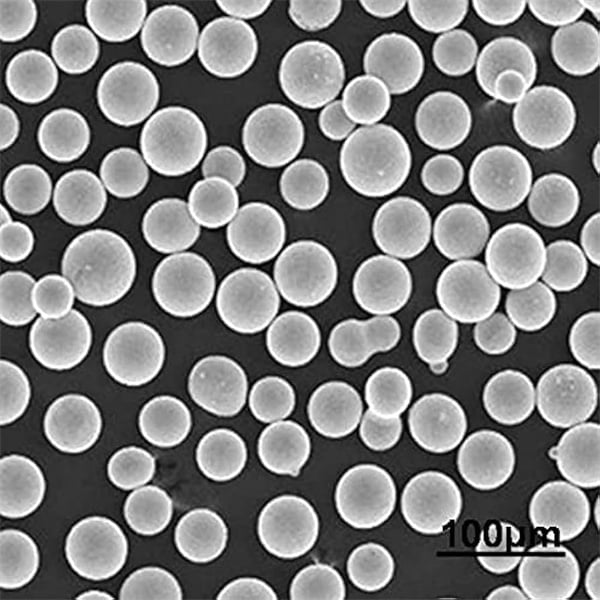
Kostenanalyse van metalen 3D-printmaterialen
Materiaalkosten vormen een aanzienlijk deel van de uiteindelijke onderdeelkosten bij 3D-printen van metaal. Hieronder vindt u een geschatte prijsklasse:
| Materiaal | Kosten per kg | Kosten per cm3 |
|---|---|---|
| Aluminium legeringen | $50-$150 | $0.15-$0.45 |
| Titanium legeringen | $350-$1000 | $1.00-$3.00 |
| Roestvrij staal | $90-$250 | $0.25-$0.75 |
| Inconel 718 | $350-$600 | $2.50-$4.50 |
| Kobalt Chroom | $500-$1200 | $3.50-$8.50 |
- Titanium- en kobaltchroomlegeringen zijn het duurst, terwijl aluminium redelijk geprijsd is.
- De materiaalkosten stijgen met het bouwvolume – grotere onderdelen in dure legeringen vereisen hogere materiaalbudgetten.
- Optimalisatie om ondersteuningsafval en nabewerking te verminderen, kan helpen de effectieve materiaalkosten te verlagen.
Normen voor metaalpoeders
Om herhaalbare prints van hoge kwaliteit te garanderen, moeten metaalpoeders die bij 3D-printen worden gebruikt aan bepaalde minimumnormen voldoen:
| Eigendom | Belangrijke normen |
|---|---|
| Deeltjesgrootteverdeling | ASTM B822, ISO 4490 |
| Vloeibaarheid | ASTM B213, ISO 4490 |
| Schijnbare dichtheid | ASTM B212, ISO 3923 |
| Tik op dichtheid | ASTM B527, ISO 3953 |
| Chemische samenstelling | ASTM E1479, OES-analyse |
- De poederkwaliteit beïnvloedt de eigenschappen van het uiteindelijke onderdeel, zoals dichtheid, oppervlakteafwerking en mechanica.
- Bolvormige poeders met gecontroleerde deeltjesgrootteverdeling hebben een uitstekende vloeibaarheid.
- Consistente chemie en dichtheid zorgen voor processtabiliteit en herhaalbaarheid.
3D-printmethoden voor metalen
Verschillende 3D-printtechnologieën kunnen metalen en legeringen verwerken:
| Methode | Materialen | Belangrijkste voordelen | Beperkingen |
|---|---|---|---|
| Poederbedfusie | De meeste legeringen | Uitstekende nauwkeurigheid en oppervlakteafwerking | Trage bouwcijfers |
| Gerichte energiedepositie | De meeste legeringen | Opbouwfuncties op bestaande onderdelen | Lagere resolutie |
| Binder jetting | Roestvrij staal | Afdrukken op hoge snelheid | Lagere sterkte |
| Metaal extrusie | Beperkte legeringen | Lage apparatuurkosten | Lagere dichtheid |
- Poederbedtechnologieën zoals DMLS bieden de hoogste resolutie en nauwkeurigheid.
- Binderjetting werkt met een breder scala aan legeringen, maar heeft een lagere eindsterkte van het onderdeel.
- Gerichte energiedepositie maakt het printen van grote bijna-netvormdelen mogelijk.
Vereisten voor naverwerking
Als-geprinte metalen onderdelen vereisen doorgaans nabewerking om de gewenste eigenschappen te bereiken:
| Naproces | Doel | Gebruikte materialen |
|---|---|---|
| Ondersteuning verwijderen | Draagconstructies verwijderen | Legeringen met dunne, kwetsbare steunen |
| Stress verlichtend | Verminder restspanningen | Alle legeringen |
| Heet isostatisch persen | Verhoog de dichtheid, verbeter eigenschappen | Alle legeringen |
| Oppervlakteafwerking | Verbeter de oppervlakteruwheid | Alle legeringen |
| Hittebehandeling | Wijzig de microstructuur | Door veroudering hardbare legeringen zoals aluminium |
| Bewerking | Nauwkeurige afmetingen en oppervlakteafwerking | De meeste legeringen |
- Voor alle legeringen wordt een spanningsverlichtende warmtebehandeling aanbevolen om vervorming te voorkomen.
- Een HIP-behandeling kan de uiteindelijke materiaaleigenschappen aanzienlijk verbeteren.
- CNC-bewerking zorgt voor maatnauwkeurigheid en oppervlakteafwerking.
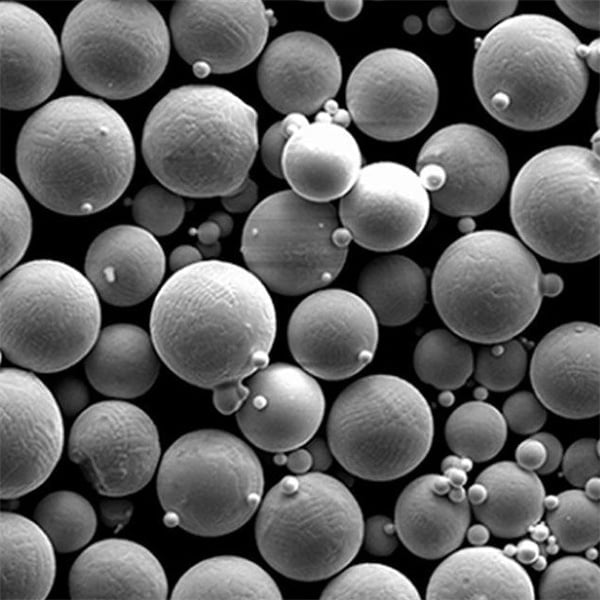
Hoe u een metaalmateriaal kiest voor 3D-printen
| Factor | Beschrijving | Overwegingen | Voorbeelden |
|---|---|---|---|
| Aanvraagvereisten | The primary function of the 3D printed part will heavily influence material selection. Consider factors like: * Sterkte en duurzaamheid: How much stress will the part experience? * Gewicht: Is lightweight construction essential? * Hittebestendigheid: Will the part be exposed to high temperatures? * Corrosieweerstand: Will the part encounter harsh environments? | * Prioritize high-strength options like Titanium alloys or Maraging Steel for load-bearing components. * For lightweight applications, Aluminum or Nickel alloys offer excellent strength-to-weight ratios. * Inconel and Nickel alloys excel in high-temperature environments like jet engines. * Parts exposed to saltwater or chemicals may benefit from the superior corrosion resistance of Stainless Steel. | * Lucht- en ruimtevaart: High-strength Titanium alloys for landing gear or engine components. * Automobiel: Aluminum alloys for lightweight body panels or pistons. * Medische hulpmiddelen: Biocompatible Titanium for implants or surgical instruments. * Mariene toepassingen: Corrosion-resistant Stainless Steel for boat propellers or saltwater pumps. |
| 3D Printing Process | Different metal 3D printing technologies have varying capabilities and material compatibility. Consider: * Machine compatibiliteit: Ensure the chosen material is compatible with your specific 3D printer’s technology (e.g., Laser Beam Melting, Binder Jetting). * Beschikbaarheid materiaal: Not all materials are readily available for every 3D printing process. * Surface Finish & Post-Processing: Some materials may require additional finishing steps to achieve desired surface quality. | * Laser Beam Melting (LBM) offers a wide range of compatible materials, including high-performance alloys like Titanium and Inconel. * Binder Jetting is well-suited for materials like Stainless Steel and some tool steels. * Electron Beam Melting (EBM) is ideal for highly reactive materials like Titanium but may require more extensive post-processing for surface finishing. | * LBM: Widely used for its versatility, compatible with materials like Titanium alloys, Stainless Steel, and Inconel. * Bindspuiten: Well-suited for cost-effective printing of Stainless Steel parts for less demanding applications. * EBM: Ideal for complex Titanium components in aerospace or medical applications, but post-processing can add time and cost. |
| Materiaaleigenschappen | Beyond the basic properties like strength and weight, consider these additional characteristics: * Ductility (Formability): How easily can the material be bent or shaped without breaking? * Warmtegeleidingsvermogen: How well does the material conduct heat? * Biocompatibiliteit: Is the material safe for implantation in the human body? * Elektrische geleidbaarheid: Does the part require electrical conductivity for its function? | * Vervormbaarheid: Ductile materials like certain Nickel alloys may be preferable for parts requiring some degree of bending or forming. * Warmtegeleidingsvermogen: High thermal conductivity materials like Aluminum are ideal for heat exchangers or heat sinks. * Biocompatibiliteit: For medical implants, biocompatible materials like Titanium or Tantalum are essential. * Elektrische geleidbaarheid: Copper or Copper alloys would be suitable choices for parts requiring electrical conduction. | * Vervormbaarheid: Nickel alloys like Inconel 625 offer good ductility for parts requiring some formability. * Warmtegeleidingsvermogen: Aluminum alloys are excellent choices for heat exchangers due to their high thermal conductivity. * Biocompatibiliteit: Titanium and Tantalum are biocompatible choices for implants due to their minimal tissue irritation. * Elektrische geleidbaarheid: Copper is the best conductor of electricity readily available for 3D printing. |
| Kostenoverwegingen | Material cost, along with potential post-processing needs, can significantly impact the overall project budget. * Material Price: Some exotic alloys like Inconel or precious metals like Gold can be very expensive. * Poederkwaliteit: Higher quality metal powders may have a higher cost but can lead to better printability and part quality. * Nabewerking: Certain materials may require additional steps like heat treatment or machining, adding to the cost. | * Prioritize cost-effective materials like Stainless Steel or Aluminum for non-critical applications. * When high performance is essential, consider the long-term benefits of a more expensive material like Titanium. * Evaluate the cost of post-processing needs and factor that into the overall material selection process. | * Kosteneffectief: Stainless Steel or Aluminum often offer good value for less demanding applications. * High-Performance: Titanium alloys provide excellent strength-to-weight ratio but come at a premium cost. * Balance Needed: Consider the trade-off between material cost, performance requirements, and necessary post-processing. |
Veelgestelde vragen
Vraag: Welke metaallegering heeft de hoogste sterkte voor 3D-printen?
A: Inconel-superlegeringen zoals Inconel 718 hebben de hoogste treksterkte, maar zijn minder taai. Titanium Ti-6Al-4V heeft de hoogste sterkte-gewichtsverhouding.
Vraag: Zijn onderdelen 3D-geprint in roestvrij staal corrosiebestendig?
A: Ja, 316L en andere roestvrijstalen legeringen behouden hun uitstekende corrosieweerstand na 3D-printen.
Vraag: Wat is de meest gebruikte titaniumlegering bij 3D-printen?
A: Ti-6Al-4V is de meest populaire titaniumlegering en omvat 90% van alle titanium 3D-printen. Het biedt de beste allround eigenschappen.
Vraag: Welke aluminiumlegering is het beste voor 3D-printen?
A: 6061 en 7075 worden het meest gebruikt, waarbij 6061 een goede corrosieweerstand biedt tegen lagere kosten, en 7075 wordt gekozen voor structurele toepassingen met hoge sterkte.
Vraag: Zijn nabewerkingsstappen verplicht voor 3D-geprinte metalen onderdelen?
A: Nabewerking zoals het verwijderen van ondersteuningen, spanningsverlichting en oppervlakteafwerking worden ten zeerste aanbevolen voor optimale materiaaleigenschappen en prestaties.
Vraag: Welk 3D-printproces werkt met het breedste scala aan metaallegeringen?
A: Binderjetting en gerichte energieafzetting kunnen met de meeste legeringen werken, maar poederbedfusie produceert onderdelen met een hogere resolutie.
Vraag: Hoe verhoudt de nauwkeurigheid van onderdelen zich tussen het bewerken en 3D-printen van metalen?
A: CNC-gefreesde onderdelen maken nauwere toleranties en een betere oppervlakteafwerking mogelijk dan 3D-geprinte metalen. 3D-printen maakt echter complexere geometrieën mogelijk.
Vraag: Welk 3D-printproces van metaal heeft de hoogste bouwsnelheden?
A: Met Binder jetting kunnen de hoogste printsnelheden worden bereikt, waarbij onderdelen tot 10 keer sneller worden opgebouwd dan bij poederbedfusieprocessen.
